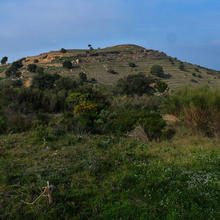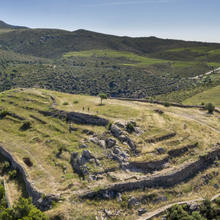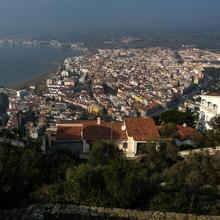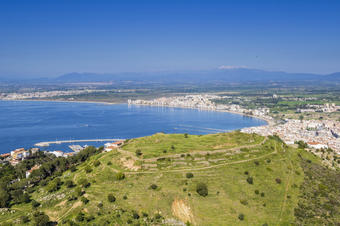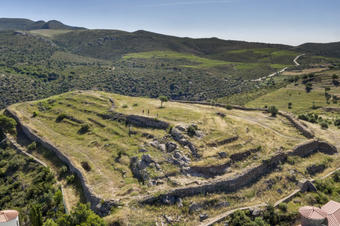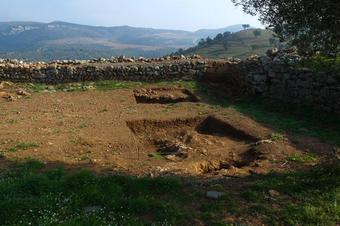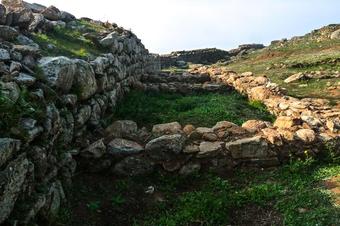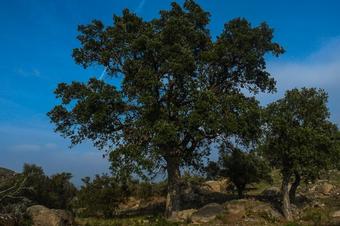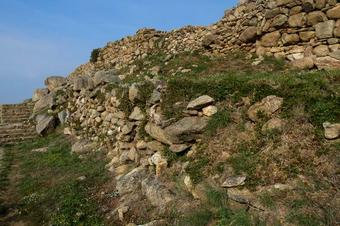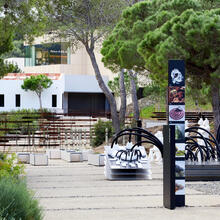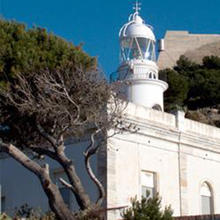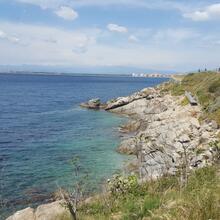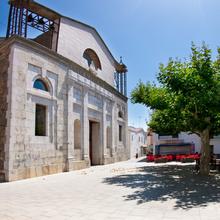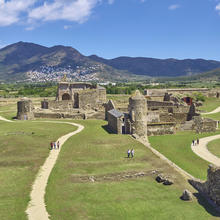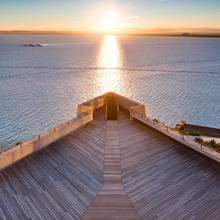Introduction
The remains of the Visigothic Roses
This brief, round trip - a short walk suitable for all ages - allows us to get to know the Castrum Visigothic or the village of Puig Rom a little better, undoubtedly some of the most significant Visigoth remains in the Iberian peninsula. We climb through a landscape characterised by scrubland dotted with holm oaks and pines, as well as some olive and vineyard cultivation that still continues in the flatter parts.
We recommend the Local Natura App to do this route. Download it for free here:
Apple store Google Play


-
TypologyTime Circular
-
DifficultyFor families
-
Duration50 minutes
-
Slope120.00 meters
-
Distance2.70 km
-
ThemeEnvironmentArchitecture and environment
-
ActivityBy foot
-
Rating
Slope graph

Description
The remains of the Visigothic Roses
We begin the route gently following a wide track, skirting a vineyard and an olive grove framed by beautiful dry stone banks. We will also pass an artificial irrigation pond.
We are plunged into a landscape of Mediterranean scrub dotted with pines and cork oaks, which has developed with the abandonment of the cultivated terraces and, more than likely, the incidence of a forest fire, with an abundance of rocky outcrops very evident. Further on, the systematic cleaning or grazing of the vegetation in the area is also evident, probably due to both the desire to improve the appearance of the hillside with its remains of the village, and due to the proximity of these hills to one of the housing developments in Roses in order to protect it from possible forest fires that effect the area.
Still on a gentle incline, we can stop to observe at close hand some important examples of cork oaks and pines, and also enjoy their welcome shade in this area which is very exposed to the rays of the sun.
Shortly we will reach the base of the Puig de les Muralles mountain where scattered about are the remains of walls and other dwellings belonging to the village of Puig Rom or Castrum Visigótico. We can climb to the highest part of the promontory, from where most of the remains and the very visible excavations can be seen, as well as taking a stroll around its base along a pleasant and elevated path which, from the southeastern and northwesterb slopes, offers wondferul panoramic views of the Gulf of Roses, part of the Alt Empordà and the surrounding mountains.
Having spent some time losing ourselves among this archaeological evidence of the history of Roses and Empordà, we will return to the starting point by retracing the same path we had taken previously, this time looking at the landscape of the nearby bare mountain peaks, which form the first spurs of the Cap de Creus peninsula, from a new perspective.
Tips
ROUTE
- Short route which climbs gently and presents no difficulties.
WATER
- Bring water with you: there are no sources of drinking water at all on the path!
PRECAUTIONS
- In the area of the ruins of the Castrum, take care of the children, as there are walls and holes through which they could fall.
WEATHER
- You should avoid times when the sun is at its highest as there is almost no shade.
- Whenever you go, always protect yourself with sunscreen. The terrain is quite exposed.
- This is an area where the Tramuntana wind often blows. If the wind is very strong, we don’t recommended going out into the countryside. In addition to affecting stability, remember that you might not enjoy your time due to the discomfort caused by the strong wind.
TERRAIN
- The terrain on which you walk does not present any type of difficulty, we will go all the way down the comfortable path.
EQUIPMENT
- In case of wind, it is recommended to wear a windproof jacket.





